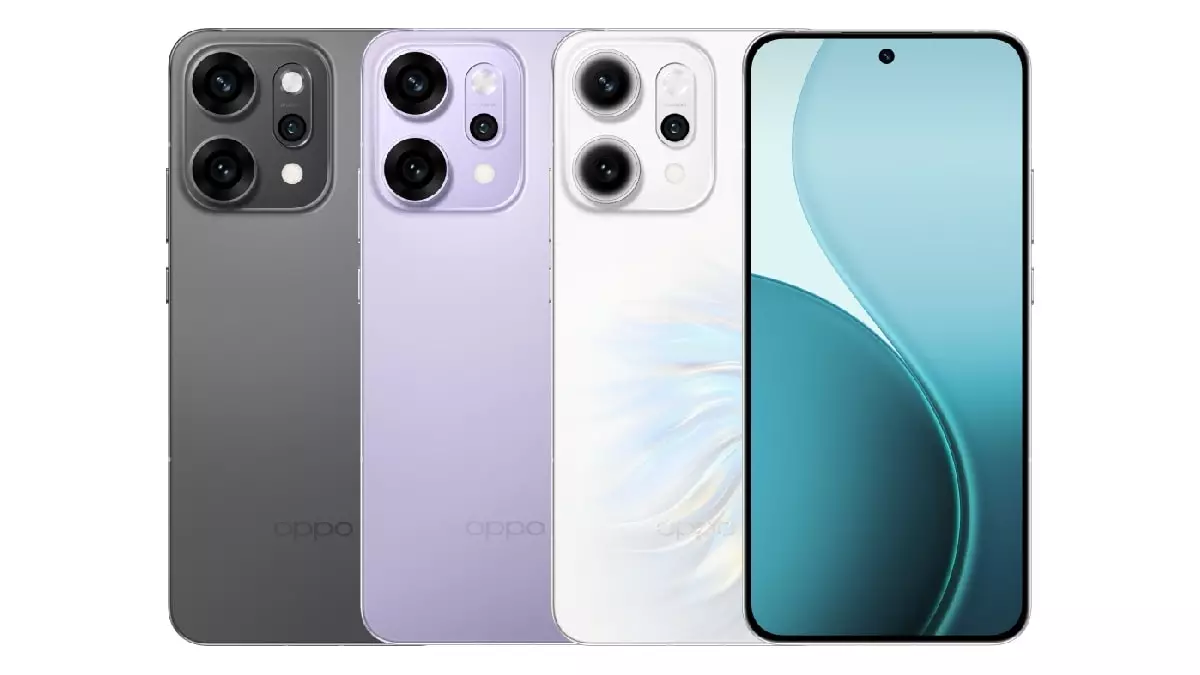In a market flooded with smartphone launches, Oppo’s latest Reno 14 5G series arrives with promises of innovation and cutting-edge features. Yet, amidst the glitz of teasers and leaks, one must ask—does this device truly push the boundaries of what a mid-tier phone can achieve, or is it merely riding the coattails of fleeting technology trends? The industry’s obsession with high-megapixel cameras, dazzling displays, and AI features can often distract from what truly matters: actual user experience, software longevity, and genuine innovation. From my critical perspective, Oppo’s newest offerings seem like carefully curated hype rather than a game-changer, risking the trap so many manufacturers fall into—superficial upgrades that appeal to early adopters but lack substantial long-term value.
While the series boasts impressive specifications on paper—like a triple or quad-camera setup that highlights 50-megapixel sensors, and hefty batteries supporting fast charging—the real questions are: How meaningful are these features? Do they genuinely enhance everyday usability or merely serve as marketing bullet points? It’s easy for brands to tout AI features and camera megapixels, but the real challenge is delivering meaningful improvements that resonate with users seeking durability, security, and software innovation. Oppo’s focus on camera specs might excite the tech-enthusiast crowd, but for the average user, these specs risk becoming mere numbers, disconnected from tangible benefits.
Questionable Innovation in a Saturated Market
The Oppo Reno 14 5G series appears to follow the tried-and-true formula—bigger screens, high refresh rates, multiple camera sensors—yet it falls into the trap of incremental upgrades. The transition from the Chinese launch to the Indian market is less about innovation and more about catching up with competitors. Why repeatedly emphasize the camera megapixels? Because it’s a proven marketing tactic rather than an indicator of superior image quality. The 50MP sensors, although impressive on paper, depend on software processing for actual output quality—a process that’s often inconsistent and overhyped.
Furthermore, the manufacturers are parading powerful processors like the Dimensity 8350 and 8450, but in the real world, these chips offer diminishing returns for most users. The emphasis on additional RAM and storage options looks appealing, yet it exposes the ongoing issue of device longevity. How long will these devices remain relevant before hardware or software obsolescence kicks in? As a critic, I believe the focus should shift from stuffing the phone with as many features as possible to ensuring that these features operate seamlessly within a well-optimized ecosystem.
The Illusion of Endless AI Features and Spec Race
AI features, such as AI Recompose and AI Voice Enhancer, dominate the marketing narrative. It’s easy to be dazzled by the term “AI,” but these features often do not deliver groundbreaking user benefits. Instead, they are polished gimmicks that appeal to the impatient consumers eager to see a “smart” phone do everything. Manufacturers are leveraging AI to mask the fact that hardware improvements have plateaued; AI is the new frontier to mask stagnation.
The camera setups on both models underscore this point. The Oppo Reno 14 Pro’s quad-camera array—highlighted by a periscope telephoto lens—sounds impressive, but how many users will genuinely utilize advanced zoom capabilities? And will the AI processing behind these shots make a real difference under diverse lighting conditions? Without a critical look, these features fall into the trap of overpromising and underdelivering.
Moreover, battery capacities—6,000mAh and 6,200mAh for the non-Pro and Pro models—are sizeable but not revolutionary. The inclusion of 80W wired charging and 50W wireless charging sounds attractive, yet it’s become standard in many devices of similar price points. Consumers deserve more than just rapid charging; they deserve batteries designed for long-term use and minimal degradation—areas where the industry constantly falls short.
On the True Value of ‘Premium’ Mid-Range Devices
Ultimately, the real question for consumers is whether Oppo’s Reno 14 5G series offers genuine value or if it’s just another polished product in a sea of sameness. While the specifications are tempting on paper, the execution and longevity are what truly count. The industry’s obsession with superlative numbers and AI gimmicks risks obfuscating the essential—creating devices that are easy to market but difficult to sustain in real-world use.
From my perspective, Oppo’s latest lineup showcases a company playing it safe—copying what competitors do rather than redefining what a mid-range phone can be. Instead of advancing the user experience meaningfully or prioritizing software updates and privacy, it seems the company prefers to focus on enticing specs that cater to fleeting trends. Unless these devices are paired with a more thoughtful approach to software support and hardware durability, they will be yet another example of technology’s tendency to chase specs rather than prioritize substance.



Leave a Reply